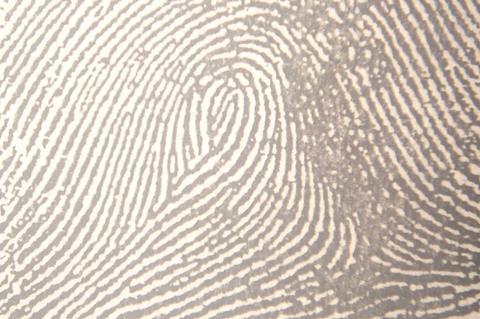A fingerprint may soon be all a doctor needs to check whether tuberculosis patients are taking their antibiotics – thanks to a new study led by the University of Surrey.

Scientists successfully detected the drugs in finger sweat – and with almost the same accuracy as a blood test.
Professor Melanie Bailey, an analytical chemist and co-author of the study from the University of Surrey, said: “Up until now, blood tests have been the gold standard for detecting drugs in somebody’s system.
“Now we can get results that are almost as accurate through the sweat in somebody’s fingerprint. That means we can monitor treatment for diseases like tuberculosis in a much less invasive way.”
Completing the course
Curable tuberculosis (TB) is treated with antibiotics. If patients don’t stick to their full course, the treatment might not work, leading to drug-resistant TB instead.
Scientists wanted to know when was best to test, and whether they could tell how much medication the patient had taken. To do so, they tested ten TB patients at the University Medical Center Groningen (UMCG), in the Netherlands.
Dr Onno Akkerman, a pulmonary physician with focus on tuberculosis from the UMCG said: “It was very simple to collect our samples. We asked patients to wash their hands, put on a nitrile glove to induce sweating, and then press their fingertips onto a paper square.
Not a biohazard
“Finger sweat can be collected without any specialist training. Unlike blood, it isn’t a biohazard, so can be transported and stored much more easily.
“We’re looking forward to working with Surrey to detect other TB drugs using this promising technique.”
The samples were shipped to Surrey’s Ion Beam Centre and they were analysed using mass spectrometry – which breaks the sample down to see what it is made of.
Scientists detected antibiotics in finger sweat with 96% accuracy. The metabolite, produced by actually ingesting the drug, showed up with 77% accuracy.
Length of retention
The drug itself was present between one and four hours after ingestion, while a metabolised version showed up best after six hours.
Dr Katie Longman, co-author of the study from the University of Surrey, explained: “Doctors need to check whether tuberculosis patients are taking their antibiotics. It’s much quicker and more convenient to do that using fingerprints rather than taking blood.
“This could ease the time pressure on a busy health service and offer patients a more comfortable solution.
“For some patients, like babies, blood tests are not feasible or desirable – so techniques like this one could be really useful.”
The study is published in the International Journal of Antimicrobial Agents.







No comments yet